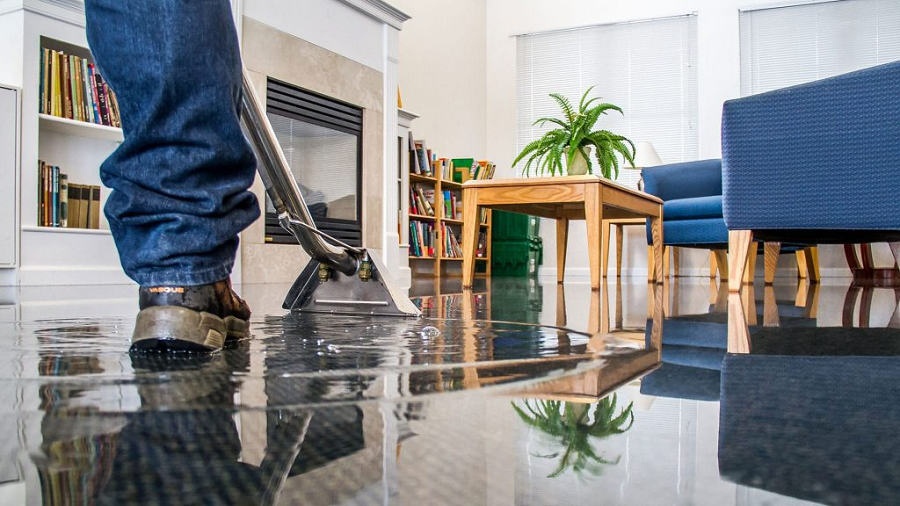
Flooding can be a devastating experience for homeowners, causing extensive damage to property and posing significant health risks. For Long Island residents, understanding the steps involved in flood damage restoration can help mitigate the impact and ensure a safe and effective recovery. Here’s what you need to know about dealing with flood damage and restoring your home.
1. Ensure Safety First
Safety is paramount in the aftermath of a flood. Before re-entering your home, ensure that it’s safe to do so. Floodwaters can cause structural damage and create hazardous conditions such as electrical hazards and contamination. If in doubt, wait for professional assistance. Always wear protective gear, including gloves, boots, and masks, to protect yourself from contaminants and potential hazards.
2. Contact Your Insurance Company
Promptly notify your insurance company about the flood damage. Document the damage with photos and videos, and keep a detailed inventory of all affected items. This information will be crucial for filing your insurance claim and ensuring that you receive the compensation you’re entitled to. Your insurance company can also provide guidance on the restoration process and recommend reputable restoration companies.
3. Begin Water Removal and Drying
The first step in flood damage restoration is to remove standing water and begin the drying process. The longer water sits, the more damage it can cause. Use pumps, wet vacuums, and dehumidifiers to remove water and moisture from your home. Professional restoration companies have specialized equipment to expedite this process and ensure thorough drying.
4. Assess the Damage
A comprehensive assessment of the damage is essential. Restoration professionals will evaluate the extent of the water damage, checking for structural issues, mold growth, and damage to personal belongings. This assessment will help determine the scope of the restoration work required and provide a clear plan for recovery.
5. Prevent Mold Growth
Mold can begin to develop within 24 to 48 hours after flooding, posing serious health risks and further damaging your property. Professional mold remediation is often necessary to ensure that all mold is thoroughly removed. This involves cleaning and disinfecting affected areas, removing contaminated materials, and using specialized equipment to eliminate mold spores.
6. Clean and Disinfect
Floodwaters often contain contaminants such as sewage, chemicals, and debris, making thorough cleaning and disinfection critical. Restoration professionals use industrial-grade cleaners and disinfectants to sanitize your home, ensuring that it is safe and free from harmful bacteria and pathogens. All surfaces, including walls, floors, and furniture, should be cleaned and disinfected.
7. Dry and Dehumidify
Thorough drying and dehumidification are essential to prevent further damage and inhibit mold growth. Restoration companies use high-powered fans, dehumidifiers, and moisture meters to ensure that your home is completely dry. This step is crucial in restoring your home to a safe and habitable condition.
8. Repair and Restore
Once the cleaning and drying processes are complete, the next step is to repair and restore your home. This may involve replacing drywall, flooring, and insulation, as well as repairing or replacing damaged structural components. Restoration professionals will work to return your home to its pre-flood condition, ensuring that it is safe, functional, and aesthetically pleasing.
9. Restore Personal Belongings
Salvaging personal belongings is an important part of the restoration process. Items such as furniture, electronics, and clothing may be cleaned and restored using specialized techniques. Restoration professionals can advise you on which items can be saved and provide the necessary services to restore them.
10. Implement Preventive Measures
After experiencing a flood, it’s wise to take steps to prevent future flooding. Consider installing sump pumps, backflow valves, and improved drainage systems to protect your home. Regular maintenance and inspections can also help identify potential issues before they become serious problems.
Conclusion
Flood damage restoration is a complex and challenging process, but with the right steps and professional assistance, Long Island residents can effectively recover from flood damage. By ensuring safety, contacting your insurance company, promptly removing water, preventing mold growth, and thoroughly cleaning and repairing your home, you can restore your property and peace of mind. Preparing for potential future flooding can also help safeguard your home against future disasters. Trusting experienced restoration professionals will make the recovery process smoother and more manageable, helping you return to normalcy as quickly as possible.

